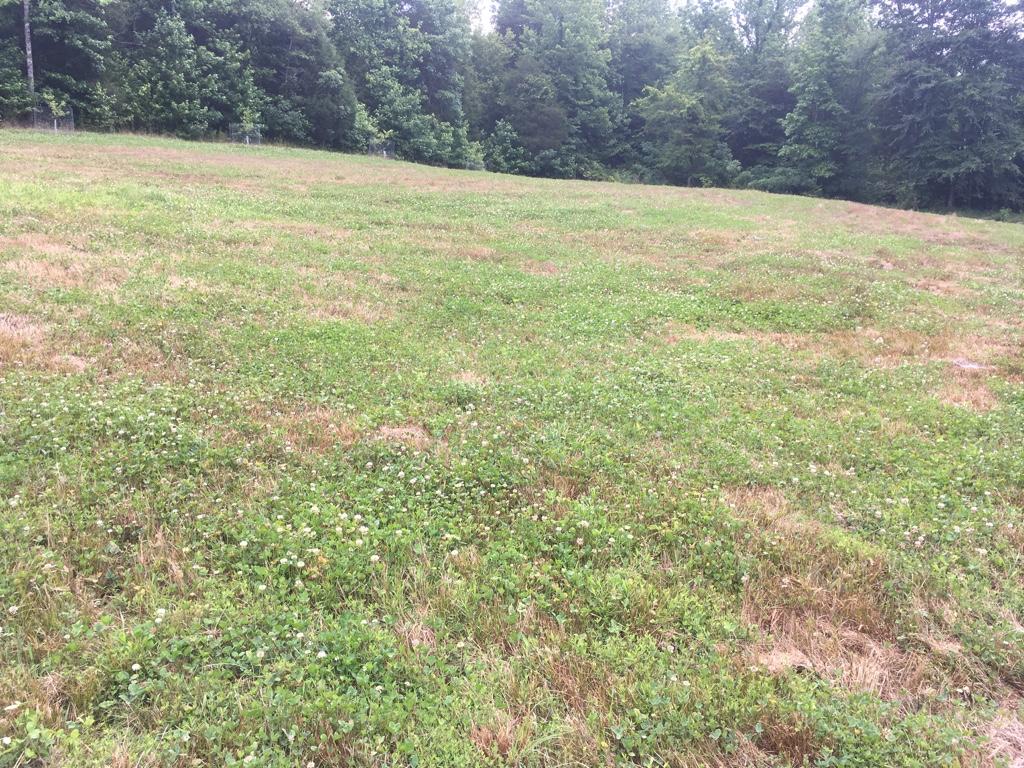Mattyq2402
5 year old buck +
Got a couple frost seed clover fields that took off. Got some weed competition. Looking to spray, looking for an economical approach. Is slay my best value?
Glyphosate wont kill the clover?
Perennial clovers can also be controlled with glyphosate when the plants are seedlings, but once the clover is established, it cannot be controlled except by digging it out. Glyphosate at high rates will suppress some clovers.
http://ipm.ucanr.edu/PMG/PESTNOTES/pn7490.html
Got a couple frost seed clover fields that took off. Got some weed competition. Looking to spray, looking for an economical approach. Is slay my best value?



Will 1 or 2 qts per acre kill smartweed for you guys?

Clover was being over run with switch grass. It also had a smartweed infestation. A light does of gly (1 oz per gal water), appropriate cleth, 2-4 dB, and crop oil has it looking pretty good. Brown is dead stuff. Thanks Mennonite Man for the advice!!

Will 1 or 2 qts per acre kill smartweed for you guys?
I'm not sure there's a yes or no answer. I've stopped using glyphosate on clover. For the longest time I was a proponent, but I found it fairly ineffective on smartweed. And I've killed a crop of clover or two along the way. The big problem, for me, was the rebound of smartweed from seed. I've switched to IMOX.Will 1 or 2 qts per acre kill smartweed for you guys?
I know my calibrations. Not everybody knows there's. A lot of folks ask how many ounces per gal of water all the time. Simple math really. 1 qt per acre for me, maybe a little less.Oz/gal are meaningless if we don't know how the sprayer is calibrated. That is why for ag gly is specified in qt/ac. This takes the sprayer out of the equation.
I'm not sure there's a yes or no answer. I've stopped using glyphosate on clover. For the longest time I was a proponent, but I found it fairly ineffective on smartweed. And I've killed a crop of clover or two along the way. The big problem, for me, was the rebound of smartweed from seed. I've switched to IMOX.
I find the oz per gal to work better for me. If you don’t know the size of your plot calibration is meaningless. I go 2 oz per gal and spray my plots til the tank is empty. If it’s a bigger plot or the weeds are taller I will go 4 oz per gallon and spray till empty. This works for me. My sprayer is only 16 gallon. That means I spray heavy. I don’t want anything to survive when I spray if I do I mow.
Sent from my iPhone using Tapatalk
Your best value is to fall plant with a WR nurse crop. Each time the WR gets much over a foot, mow it back to release the clover. The role of WR is to out-compete weeds and the timing of fall plant allows the clover to germinate and then get a jump on annual weeds that are just germinating. Once you have established your field, re-define success and become weed tolerant. I mow once a year in the fall before the season opens. The cool nights and increased rain fall in the fall will favor the clover. Many broadleaf weeds are better deer food than the clover itself. Weeds will eventually take over any clover field. When that happens, rotate it to an N seeking crop.
The industry has convinced many that field plots should look like farm fields. While my fields look like magazine covers when first established, they get uglier each year. Deer don't care and fighting weeds with selective herbicides is taking time and money from other things I can be doing to manage deer. My deer actually favor using weedy fields as the weeds provide more vertical cover than clover.
If you go the glyphosate route, there are several things to watch. First, you want to use 1 qt/ac, not 2 or 3 quarts. 1 qt/ac is enough to top kill the clover and kill grasses. Mowing is sufficient to manage most broadleaf weeds. So, unless you have a particular problematic weed, I would not worry about herbicides. Timing is critical. The gly will topkill the clover but it will bounce back from the root system. This stresses the clover. If there are other stressors on the clover like drought, it may completely kill it. So, you want to do this with good rain in the forecast. The clover must be well established to do this. If it has not put down a good root system, it won't bounce back.
Best of luck,
Jack
I find the oz per gal to work better for me. If you don’t know the size of your plot calibration is meaningless. I go 2 oz per gal and spray my plots til the tank is empty. If it’s a bigger plot or the weeds are taller I will go 4 oz per gallon and spray till empty. This works for me. My sprayer is only 16 gallon. That means I spray heavy. I don’t want anything to survive when I spray if I do I mow.
Sent from my iPhone using Tapatalk
